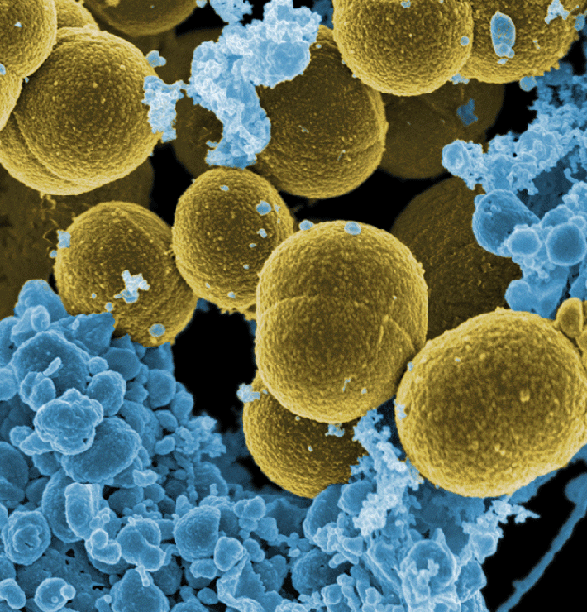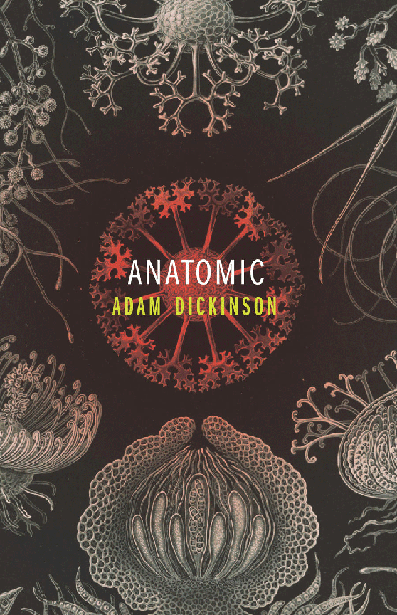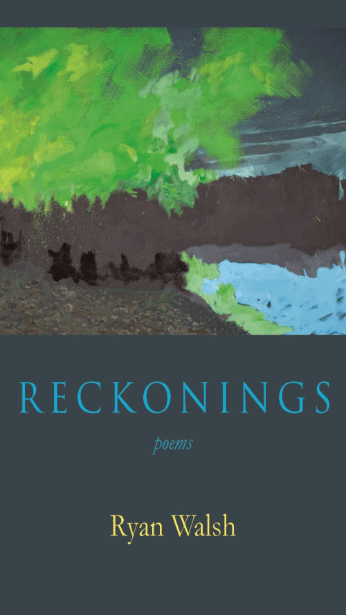Too Small, Too Slow: Making Toxicity Poignant Through Poetry
By Scott Slovic
We often find ourselves lamenting the numbing and paralyzing effects of large-scale phenomena, or textual representations of such phenomena. I’m referring, of course, to global climate change, the Sixth Megaextinction, the ongoing refugee crisis in various parts of the world, and the horrors of genocide. But other crises that challenge our perceptual abilities and our will to act occur on a microscopic level and cause damage that accrues over decades. The byproducts of industrial civilization are frequently too small and too slow to be perceived with our senses or readily understood, though we (all of us) experience exposure to toxic substances every day.
In Anatomic (2018), Canadian writer Adam Dickinson uses an experimental collage of prose meditations and poetry to present himself as an assemblage of petrochemicals and microbiomes. This is his identity as a citizen of the Anthropocene. “Being able to read the chemicals and microbes in bodily fluids means being able to read the writing of the Anthropocene in ways we have not been able to do yet” (143), he explains at the end of his book. The biochemical impacts of our external environment have always played a role in who we are on an anatomical level, Dickinson acknowledges: “In necessary ways and toxic ways, the outside doctors the inside. This is evolutionary history and this is a metabolic response to the energy technologies of my historical moment” (9). But his historical moment—our historical moment—seems to call for a special effort to invent new ways of knowing our place in the world and new forms of language to communicate this knowledge. Dickinson depicts himself as a collective being, an assemblage:
I wear multinational companies in my flesh. But I also wear symbiotic and parasitic relationships with countless nonhumans who insist for their own reasons on making me human. I want to know the stories of these chemicals, metals, and organisms that compose me. I am an event, a site within which the industrial powers and evolutionary pressures of my time come to write. I am a spectacular and horrifying crowd. How can I read me? How can I write me? (9)
In his 2001 discussion of “Toxic Discourse,” Lawrence Buell suggests that writers as far back as Charles Brockden Brown and Charles Dickens, at the end of the 18th century and well into the 19th century, were beginning to seek appropriate ways to evoke the meaning of human experience during the dawning era of industrial toxicity, which would not be labeled the Anthropocene until the 1990s. Buell particularly notes that such writers relied on a “Gothic” aesthetic, one that evokes fear and the ruination of human identity, in promoting the “gothicization of public health issues” and representing “gothicized environmental squalor” (Endangered World 43). In order to know himself in the 21st century, and by extension to explain who (or what) all of us have become, Dickinson writes, “I collect my blood, urine, sweat, and feces. I send them to laboratories to determine the level and types of chemicals and microbes I find…. I also tune into the signal of my microbiome by swabbing various areas of my body for bacteria—hand, genitals, ear, nose, and mouth.” The conclusion: “I am a spectacular and horrifying assemblage” (9).
If Dickinson’s work aspires to convey the metabolic substance of our Anthropocenic identities, Ryan Walsh’s 2019 poetry collection, Reckonings, focuses on the emotional poignancy of risk and contamination. When author and biologist (and cancer survivor) Sandra Steingraber wrote in her 1997 memoir Living Downstream that “Cultivating an ability to imagine” how industrial toxins course through subterranean waters “is an imperative need,” she seems to have been calling for a new poetics of toxicity. Walsh’s poems tell the story of Spelter, West Virginia, where the Dupont Corporation operated a zinc smelter from 1928 to 1950, leaving the community with a de facto Superfund dump and a slow, barely discernable public health crisis. In 2007, a group of citizens from the Spelter area sued DuPont for exposing the community to arsenic, cadmium, and lead, ultimately receiving a $382-million verdict for damages (this was later reduced to a thirty-year medical monitoring program and $70 million to remediate properties near the former smelter). One of Walsh’s poems, “Expert Testimony (Perrine v. DuPont, 2008),” condenses and dramatizes the testimony of soil scientist Dr. Kirk Brown as a way of poignantly representing the expert witness’s actual language, to which there is a link in the Notes at the end of the book:
In fewer than 100 words, this poem crystallizes Dr. Brown’s actual testimony, which is far more defuse and equivocal. The witness’s statement about the increased risk of cancer is translated from numerical probabilities into biological activities (“get it on the skin,” “ingest it,” etc.) as a way of vivifying the pathways of contamination and enhancing readers’ empathy for victims of dangerous contamination.
Other poems in Reckonings, such as “Appalachian Spring,” “Fable,” and “Wild Perfection,” evoke wistful nostalgia, a yearning to know the pre-industrial “wild perfection” of Appalachia that now seems unattainable. “Once upon a time,” Walsh writes in “Fable,” “there were rivers and streams / you could drink from” (17).
In “The Meaning of ‘One Data Point’: An Interview with Sandra Steingraber” (from Numbers and Nerves), Steingraber emphasizes the importance of presenting individual human stories within the broader context of “statistical scientific stories.” Audiences “have a limit on how much quantitative information they can hear before their eyes glaze over,” she notes (192). By using “lovely language” and exposing the human dimension of the statistics, she tries to help readers “open up and absorb more” information (193). We see the human dimension of toxic contamination, a phenomenon that usually occurs on a level too minute and too slow for human perception, begin to emerge in such works as Dickinson’s Anatomic and Walsh’s Reckonings.
I have discussed both of these books of poetry and the broader theoretical context of ecoprecarity, the ecological gothic, and transcorporeality in a forthcoming article titled “‘Cultivating an Ability to Imagine’: Ryan Walsh’s Reckonings and the Poetics of Toxicity”; a link will be provided here when the article appears.
References
Buell, Lawrence. Writing for an Endangered World: Literature, Culture, and Environment in the U.S. and Beyond. Harvard University Press, 2001.
Dickinson, Adam. Anatomic. Coach House Books, 2018.
Slovic, Scott. “The Meaning of ‘One Data Point’: An Interview with Sandra Steingraber,” Numbers and Nerves: Information, Emotion, and Meaning in a World of Data, edited by Scott Slovic and Paul Slovic. Oregon State University Press, 2015, pages 192-99.
Steingraber, Sandra. Living Downstream: A Scientist’s Personal Investigation of Cancer and the Environment. 1997. Vintage, 1998.
Walsh, Ryan. Reckonings: Poems. Baobab Press, 2019.
Photograph of S. aureus bacteria by Flickr user Microbe World CC BY-NC-SA 2.0




